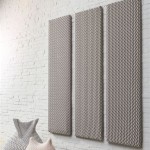Can You Put Flooring Over Ceramic Tile? A Comprehensive Guide
The question of whether new flooring can be installed over existing ceramic tile is a common one among homeowners contemplating renovations. The answer is generally yes, but it requires careful consideration and preparation to ensure a successful and long-lasting installation. Various factors influence the feasibility of laying new flooring over tile, including the condition of the existing tile, the type of new flooring being installed, and the subfloor's structural integrity.
This article aims to provide a comprehensive overview of installing different types of flooring over ceramic tile. It will address the pros and cons, necessary preparation steps, and potential challenges that may arise during the installation process. It is essential to understand the nuances of this type of flooring project before commencing to avoid costly mistakes and unsatisfactory results.
Assessing the Existing Ceramic Tile
Before considering overlaying ceramic tile, a thorough assessment of the existing tile is paramount. Any issues with the existing tile will likely be magnified if covered by new flooring. The key is to determine if the existing tile provides a stable and suitable base for the new flooring material.
First, inspect for loose, cracked, or uneven tiles. Loose tiles must be re-adhered or replaced. Cracked tiles should also be replaced, as their instability will translate to the new flooring above. If the tile is severely damaged across a large area, removing it entirely might be a more practical option than attempting to overlay it.
Next, evaluate the tile surface for levelness. Significant variations in height between tiles can create an uneven subfloor, which will negatively impact the new flooring. Minor imperfections can often be addressed with patching compounds, but substantial unevenness might necessitate leveling the entire surface with a self-leveling underlayment.
Finally, check the grout lines. If the grout is crumbling or missing in places, it should be repaired before installing new flooring. This prevents the new flooring from flexing into the gaps and potentially cracking over time. Thorough cleaning of the existing tile and grout is also crucial to ensure proper adhesion of any leveling compounds or adhesives.
Factors Influencing Flooring Choice
The type of new flooring being installed plays a critical role in determining the viability of an overlay installation. Some flooring materials are more forgiving and adaptable to existing tile than others.
Luxury Vinyl Plank (LVP) and Luxury Vinyl Tile (LVT): These are often favored choices for overlaying tile. LVP and LVT are relatively thin and flexible, offering good conformability to minor imperfections. The click-lock or glue-down installation methods also make them suitable for direct application over prepared tile surfaces. However, it is imperative to use a high-quality underlayment to cushion the flooring and minimize the potential for telegraphing – where the grout lines or textures of the tile become visible through the new flooring.
Laminate Flooring: Similar to LVP, laminate flooring can be installed over ceramic tile, but proper preparation is essential. A suitable underlayment is crucial to provide moisture protection and cushioning. Laminate flooring is typically more rigid than LVP, so any significant unevenness in the tile surface must be addressed to prevent the laminate from buckling or warping over time.
Engineered Hardwood Flooring: Engineered hardwood offers the aesthetic appeal of solid hardwood with increased dimensional stability. It can be installed over ceramic tile, but the installation method depends on the specific product. Some engineered hardwood floors can be floated over an underlayment, while others require gluing down. Ensure that the adhesive is compatible with both the engineered hardwood and the existing ceramic tile.
Tile Over Tile:Installing new tile over existing tile is possible but usually more challenging. The added thickness can raise the floor level significantly, potentially causing issues with doorways and transitions to other rooms. Also, the weight of the new tile combined with the existing tile can be substantial, so evaluating the subfloor's weight-bearing capacity is critical. If proceeding with this option, use a high-quality thin-set mortar specifically designed for tile-over-tile applications.
Carpet: Carpet can be readily installed over ceramic tile. The primary concern is the potential for moisture buildup beneath the carpet, so proper ventilation and a moisture barrier are essential. A thick carpet pad will also help to cushion the floor and minimize any unevenness from the underlying tile.
Preparation Steps for Successful Installation
Regardless of the flooring material chosen, thorough preparation is crucial for a successful overlay installation. Improper preparation can lead to flooring failures, such as cracking, buckling, or delamination.
Cleaning and Repairing: Begin by thoroughly cleaning the existing tile surface to remove any dirt, grease, or debris. Use a suitable cleaning solution and a scrub brush to ensure a clean surface. Repair any cracked or loose tiles, and fill in any missing grout. Allow the repairs to cure completely before proceeding.
Leveling the Surface: If the tile surface is uneven, use a self-leveling underlayment to create a smooth, level base for the new flooring. Follow the manufacturer's instructions carefully when mixing and applying the leveling compound. Allow it to dry completely before moving on to the next step. For minor imperfections, a patching compound may be sufficient.
Applying an Underlayment: An underlayment is essential for most overlay installations. It provides cushioning, reduces noise transmission, and helps to protect the new flooring from moisture. Choose an underlayment specifically designed for the type of flooring being installed. Install the underlayment according to the manufacturer's instructions.
Addressing Height Transitions: Overlaying flooring will raise the floor level, which can create a tripping hazard or an unsightly transition to adjacent rooms. Transition strips are designed to smooth out these height differences and create a seamless transition between flooring types. Choose transition strips that are appropriate for the height difference and the flooring materials being used.
Potential Challenges and Considerations
While overlaying flooring can save time and money compared to removing the existing tile, it is essential to be aware of potential challenges and considerations.
Added Floor Height: The increased floor height is one of the most significant considerations. This can affect doorway clearances, appliance placement, and transitions to other rooms. Ensure that doors can still swing freely and that appliances can be easily installed and removed. Plan accordingly for height transitions using appropriate transition strips.
Subfloor Load Capacity: The added weight of the new flooring and any leveling compounds needs to be considered in relation to the subfloor's load-bearing capacity. Consult with a structural engineer if there are concerns about the subfloor's ability to support the additional weight.
Moisture Issues: Trapped moisture can lead to mold growth and flooring failures. Ensure that the subfloor is dry and that adequate ventilation is provided. Use a moisture barrier if necessary to prevent moisture from migrating up through the existing tile. This is especially important in basements or areas prone to moisture.
Telegraphing: "Telegraphing" refers to the phenomenon where the grout lines or texture of the existing tile become visible through the new flooring. Using a thicker underlayment or a leveling compound can help to minimize telegraphing. Choosing a flooring material with a textured surface can also help to disguise any imperfections underneath.
Adhesion Problems: If the new flooring is glued down, ensuring proper adhesion to the existing tile is essential. Use a high-quality adhesive specifically designed for this purpose. Prepare the tile surface thoroughly by cleaning and roughening it to improve adhesion.
Warranty Considerations: Check the warranty requirements for the new flooring material. Some manufacturers may void the warranty if the flooring is installed over existing tile. Ensure that the installation meets the manufacturer's specifications to maintain warranty coverage.
In conclusion, installing new flooring over ceramic tile is a viable option for many homeowners, but it requires careful planning and execution. By thoroughly assessing the existing tile, choosing the appropriate flooring material, properly preparing the surface, and addressing potential challenges, it is possible to achieve a successful and long-lasting flooring installation.

What Type Of Flooring Can You Put Over Ceramic Tile Rubi Blog Usa

What Type Of Flooring Can You Put Over Ceramic Tile

What Type Of Flooring Can You Put Over Ceramic Tile Rubi Blog Usa

What Type Of Flooring Can You Install Over Ceramic Tile

How To Lay Vinyl Flooring Sheet Over Tiles

Can You Put Laminate Flooring Over Tile Twenty Oak

What Type Of Flooring Can You Install Over Ceramic Tile

Discover How To Lay Wood Floors Over Tile Discount Flooring Depotdiscount Depot Blog

Install Hardwood Flooring Over Tile Floor Double Glue Down Method

Can You Install Wood Flooring Over Tiled Floors Havwoods
Related Posts








